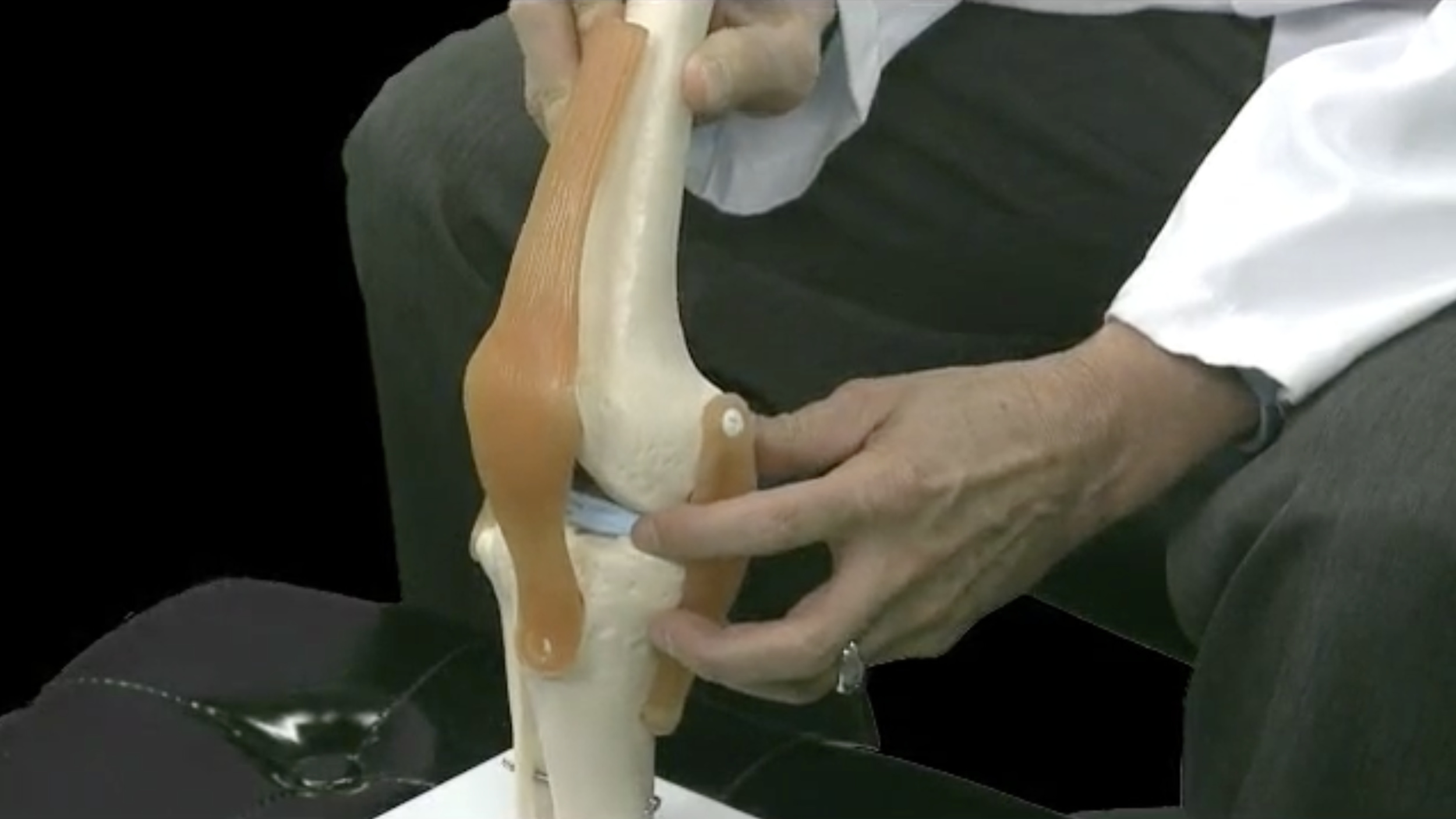Anatomy of the Knee
June 1, 2022
Hello, and welcome to Yuma Health and Happenings. I’m Dr. Ron Clark, Orthopedic Surgeon and founder of The Bone and Joint Center of Yuma. Today I want to talk about the anatomy of the knee with its amazing form and functions. We’ll also discuss what happens when the knee gets damaged and stops performing those functions.
The Anatomy of the Knee
The knee is formed by the thigh bone, called the femur, and a lower leg bone, called the tibia, connect. The knee joint can be compared to a rocking chair that moves back and forth to allow for bending and straightening. This joint consists of bone and is covered by a softer tissue known as cartilage, which cushions and lubricates the bones during movement.
The knee is kept intact by bands, called ligaments, which run along the side and through the center of the joint. We’ll talk about ligament injuries in another post, but today, we’ll look at a unique form of tissue in the knee called the meniscus cartilage or rim cartilage. This structure is made of the same type of flexible tissue as you can feel in your ear, and it is located between the bones in order to protect the joint surface from damage. When the rim cartilage becomes damaged, a process begins in which the joint surface will eventually wear, and arthritis may begin within the anatomy of the knee.
Meniscus Cartilage and Knee Injuries
The rim cartilage forms a dish-like rim to the lower portion of the knee and moves with the knee as it goes back and forth. Most of the time, we cannot even tell that it’s there, working inside of the knee.
This rim cartilage is a frequent cause of knee pain at almost any age. Fortunately, the cartilage is very durable and, for almost everyone, will last a lifetime. Sometimes the cartilage will break down and cause pain inside the knee. This will sometimes cause mild pain that will go away after a while. The larger the tear or injury of the rim cartilage, the more significant the symptoms will be. Surgery is frequently needed when the pain is constant and there is swelling, catching, or clicking inside of the joint.
There are injuries that occur where the entire meniscus cartilage is ripped inside of the knee joint. When this happens, there is sometimes a way for the tissue to be repaired so it will not need to be removed from the joint. Experiments have shown that when the meniscus cartilage is damaged and removed, there is greater wear inside of the joint, and eventually, arthritis will occur.
Diagnosing Meniscus Injuries
X-rays of the knee’s anatomy will not show if the rim cartilage is damaged, but another testing device, called the MRI, can detect the damage. That explains, in many instances, why you will hear of an injured athlete being sent for a MRI test after a knee injury, allowing the status of the rim cartilage and the knee ligaments to be evaluated.
Once the diagnosis an injury to the rim cartilage is made, it usually means that surgery will be advisable. The rim cartilage does not have the ability to heal on its own and will usually continue to cause symptoms if left as it is. When there is a large tear of the meniscus cartilage, there is an additional injury to the knee, like a ligament tear. The combination of both injuries can be very damaging to the knee.
By using a surgical viewing scope called an arthroscope, we can actually look into the knee and recognize the damage to the rim cartilage, as well as surgically correct the damage. Surgeons now have a variety of ways in which the damaged tissue can be reattached inside of the knee, giving the body a chance to heal so that it does not have the same high probability of future joint arthritis. This is especially important for those under the age of 30, as they have the longest time left in their lives to go with their knee joints.
Meniscus Repair Surgery
Now we’ll look at a way in which surgeons are able to repair this damaged tissue. A tool that is designed to go into the knee joint places staple-like devices to secure the torn rim cartilage. These devices are actually made of a substance that will dissolve in the knee after a couple of years. By placing these stabilization devices, the rim cartilage returns to a position where the tissue can heal and will no longer move back and forth, causing pain within the joint.
After surgery for a torn rim cartilage, the knee is wrapped and should be elevated for a couple of days. The person will usually be able to walk on their knee without crutches, but occasionally, swelling will be present for about a month, and the patient will need to do exercises to get the knee back in working order.
People who have desk type jobs will be able to return to work within a few days, but those whose jobs are more physically demanding may need several weeks to recover before returning back to work. There are a few individuals that might even benefit from supervised exercise or physical therapy in order to get their knees to work well.
The decision to have surgery can be difficult. It is our hope that I have helped you understand the basics of painful knee problems, as well as some of the options for treatment, allowing you to make the best decision for yourself.